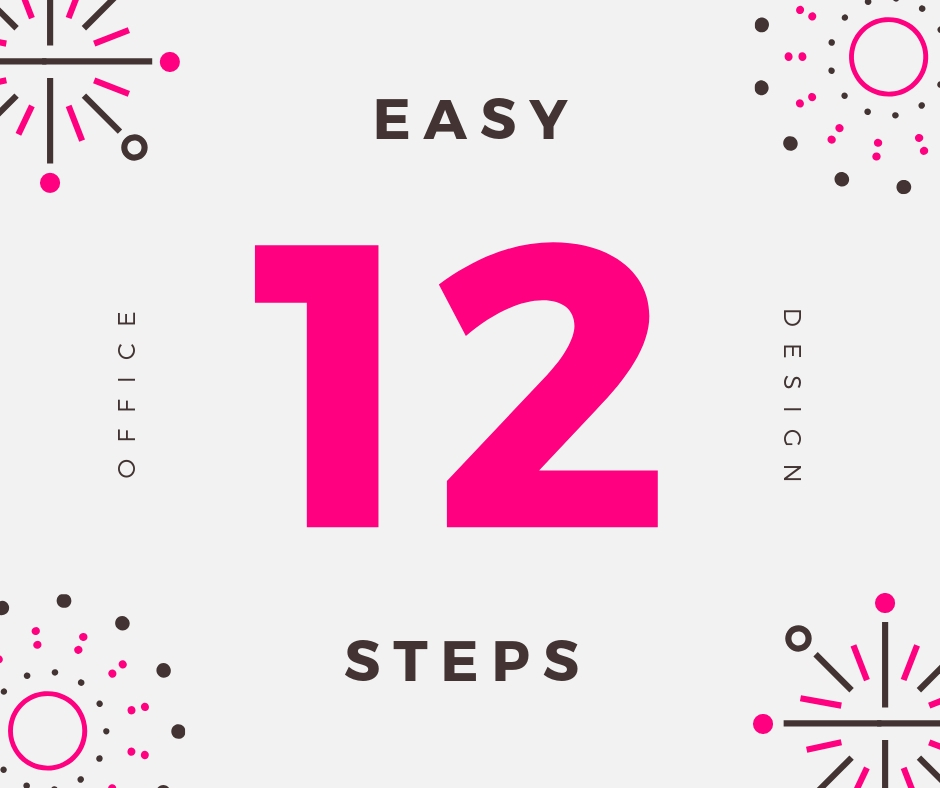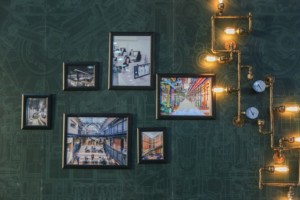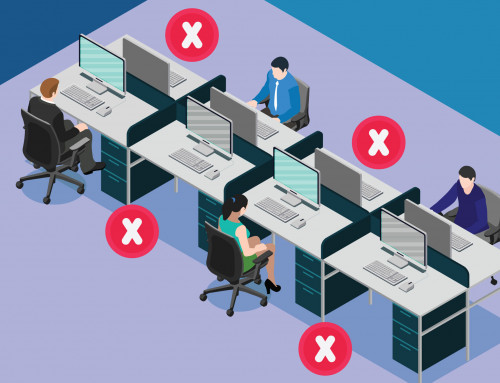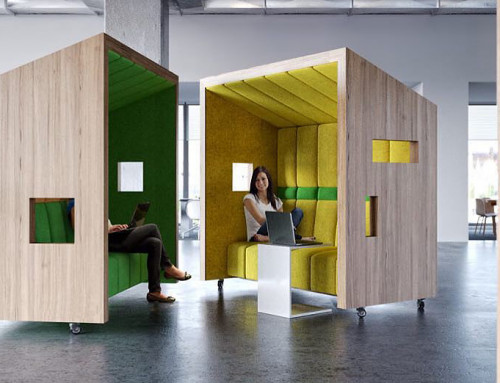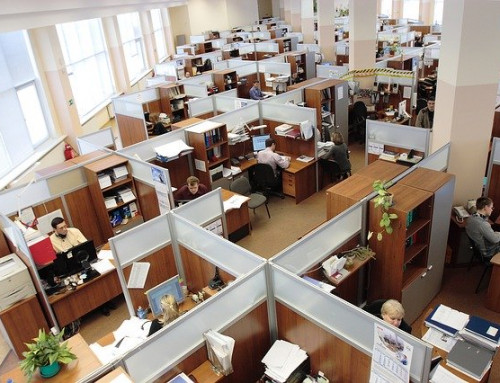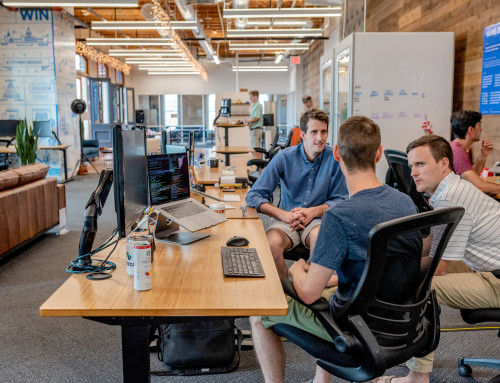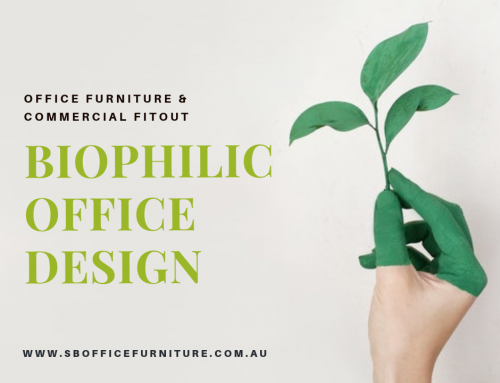Office Design Made Easy
We explore 12 easy steps to office design. By following these 12 steps, great design is possible and it is a well known formula:
+ to improve space,
+ increase functionality, and
+ make the office environment more conducive to productivity whilst inside the confines of a comfortable and inspiring atmosphere.
Follow the steps as listed below to achieve the interior office design objectives of your workplace you need to achieve your commercial furniture successes.
#1 Budget
The first and most important contributing factor to designing your office layout is the budget that you are willing to work with. You will need to plan for items such as furniture, employee workstations, office equipment (including cabling, painting and decorating and much more. So know your budget and what you can allocate to the redesigning of your workplace. Compiling options can be good exercise, because you may have items that may be refurbished, repurposed, or can survive until the next budget allocation. Prioritising work safety, then employee productivity, then aesthetics and branding.
#2 Rethink the Space
If you have been working in a specific work environment for some time, it may be difficult to visualise it any other way. But it is very important that you go back to the drawing board, and ask yourself, your team and even your customers – how can you change your office furniture design within the given square footage available and make it better?
Be creative and think outside of the box.
Your office design could include:
+ altering ceiling heights,
+ removal of walls and walkways,
+ Include more calming features such as greenery, or
+ optimise cubicles and add see-through or moveable partitioning to create an adaptable and flexible office environment.
Office Workstations and cubicles are arguably being called an outdated practice that no longer works, however, at SB Office Furniture, throughout our consultations with clients time and time again, we mention that whilst we love open plan extroverted offices designed for creativity, inspiration and collaboration, that, many businesses often forget the quieter, shier, introverts that still crave privacy and space for concentration. Human Resources, for example, have sensitive information, engage in emotional conversations and even reprimand. Accountants or management consultants that discuss delicate strategy matters. This should be done in a sensitive environment and should not be overlooked in your office design. The who and the how is very important, but because a business development officer wants a place to call home – they should be hotdesking (also known as the Hot Desk Shuffle) and hitting the road again, as most research suggests that up to 40% of office space is vacant at any one time. So there are financial benefits to hotdesking that cannot be overlooked.
#3 Defined Areas
Be aware of the more obvious factors when it comes to office furniture designs and workspace. The inclusion of activity-based workspaces – that is planning and defining certain areas of the space for specific uses. You will need to consider items like meeting rooms, offices, cubicles, reception areas, visitor seating, kitchens, workstations and breakout areas. Plan wisely and be sure these individual areas are given their own space in the most appropriate setting.
#4 Encourage Collaboration
It’s important to ensure your staff are comfortable and able to come together on projects as and when required. But it’s also important to give them space and privacy during other times too. Creating workspaces that promote collaboration, innovation, and creativity work well and will improve your office tremendously. How well your office design factors your current and future workers, will also see an improvement in your employees’ well-being, mental health and happiness at work.
#5 Plan for Now & The Future
When you implement a new office design, you will need to have one eye on the present and the other on the future. This is a challenging problem but one that can be easily overcome. You will need to know ahead of time how you plan to use space in the future if your business or industry is moving in a certain direction. This may be determined by technology, working methods or a shift in working attitudes.
You will also want to ensure there is adequate storage space requirements, access to power Office Furniture Supplies and the ability to be flexible to change spaces or optimise them for extra uses. Free standing screens are a great way to implement this concept. Network hubs, power and data cables can be ugly and/or dangerous, so they should be given serious consideration and sufficient budget. Offices are full of devices that require cables that:
+ Need hiding away from view
+ are not dangerous or risky to others
+ have sufficient phases that can support the required level of electricity
#6 Hide Cables (power & data)
With modern office furniture overflowing with computers, printers, monitors, and other electrical equipment, it’s important to hide unsafe and unsightly items such as network and power cables. It may seem hard but it is possible to lower the number of exposed wires by using integrated cabling systems hidden into office desks, under-floor, or ceiling to a desk. This necessary step may even lead to some great office design choices, but it will certainly help your office WHS.
#7 Employee Wellbeing
It has been well established that good office design enhances the well-being and productivity of your employees. Whilst there is no one size fits all, because of human diversity, you will want to get right:
+ lighting (natural and artificial)
+ air purifying plants
+ heating and cooling systems
+ collaboration or meeting areas as well as private & relaxation areas, and
+ ergonomic furniture
#8 Lighting
It has been scientifically proven that a lack of natural sunlight will impact a persons mood and productivity hugely. This is why it is important to cut down on glare and energy costs associated with overhead lighting and to improve such things as natural lighting with windows, skylights as well as glass partitioning. A study conducted by the American Society of Interior Design indicated that 68 per cent of employees complains about the lighting condition in their offices. The fact that such a substantial number of employees disliked the lighting in their offices enough to complain about it implies that many employers could be making some mistakes. The two most common scenarios for poor office lighting is the “Goldilocks conundrum” – lights that are too dim or the lights that are too harsh.
#9 Furniture
It is important to spend appropriately on office furniture and furnishing and to think of the long-term effect of wear and tear, as well as comfort and presentation. People who purchase budget furniture will experience issues with them deteriorating quickly. There are also health problems associated with cheap types of desk chairs – like back pain, bad posture and general physical discomfort. You should look for grade commercial office furniture supplier that is durable and come with a long warranty. You are investing in your business after all.
#10 Storage
You will most definitely need to take storage space into consideration when working on your office design. Take into consideration things like filing cabinets, desk pedestals, a storage wall and even a resource for stationery and other supplies. Floor space is quickly spent, which is why having office furniture and fitout experts on your side can help you build storage into your design. With the right partners, your storage solution can come fitted, so don’t underestimate the trade network you might need to deliver the holistic solution. It can be scary to think how much it may cost to fit storage above ground – but the team at SB Office Furniture recommend you get a quote as part of your options exercise advised in #1.
#11 Choose the Right Colours
Choosing certain colours can have a dramatic effect on the mood and productivity of employees.
You can use colour to help motivate your workers with shades of oranges or reds to boost energy, blues to improve focus or greens for comfort, calm and serenity. Artwork can also help the mood of employees and stimulate creativity.
#12 Branding
Workplaces office fit out furniture sydney should reflect the industry, the culture of the business and make your customers feel comfortable in your space. You can use branding to help enforce the image and industry of your business. Promote your brand message and instil loyalty in your staff, so they promote your business by being active advocates. This can foster brand awareness and reinforce the objectives of their work.

